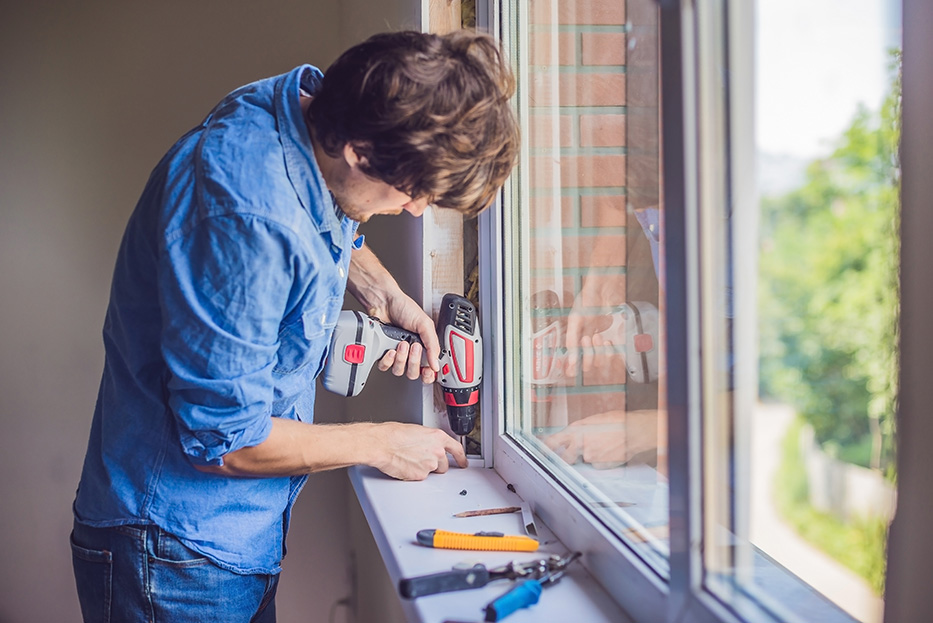Wanting some peace and quiet in your home is not something that should be taken lightly. Excess or consistent sound in your home can cause stress, sleep disturbance, and can even lead to heart disease.
As a homeowner, there are a number of steps you can take to decrease the noise in your home.
Cover your windows
“A standard window is eliminating something like 40 to 50 percent of outside noise,” says David Sudkin, the president of a soundproof window company CitiQuiet.
Sudkin adds that it’s possible to eliminate all noise coming through windows if you follow proper soundproofing steps.
One simple DIY tip to reduce the noise that enters through a window is to cover them with either thick drapes or curtains.
You can take this a step further by installing specialty sound blocking quilts or curtains to cover your windows, both of which are affordable and easy to install.
Seal any cracks or leaks
While covering the windows can be a quick and easy fix, it might not be the most effective at blocking out a lot of noise.
Randall Brown, the president of Soundproof Windows Inc., says that covering windows may prevent noise from ricocheting off the walls of your home by absorbing the sound, but this strategy won’t stop noise from coming into your home completely.
“Ninety-nine out of 100 times, huge improvements […] can be obtained by attacking the leaks,” says John Storyk of acoustic and architectural design company WSDG.
Blocking noise from entering through leaks and cracks in doors, outlets, drywall and floorboard cracks is the next step:
- Fill in cracks in the seal of the windows with caulking or sealants
- Replace old, cracking seals in windows
- Caulk around power outlet boxes
- Fill in any cracks in your floorboards or drywall with either drywall material or caulking
- Install weatherstrips under doors and in windows
You can find caulking, sealants, and weatherstrips at any hardware store.
Removing old caulk can be a hassle, but it must be done correctly or else the new caulk or sealant won’t adhere properly.
There are caulk removal products and tools you can purchase; petroleum jelly and rubbing alcohol can also be used to remove any leftover adhesive the other products weren’t able to remove.
Following these tips can reduce your Sound Transmission Class (a measurement of sound levels) by 15 percent.
Enhance your walls
Exposed and bare walls can serve as a noise-amplifier. Sound will easily bounce on bare walls, making things sound louder.
A quick and easy fix for this would be to cover the walls with sound-absorbing materials. This could mean adding sound absorbing foam, which is very effective at reducing noise, but might not look the best in terms of aesthetics.
Instead of foam, you can put up decorative felts or tapestries, add some art or paintings, and even install bookshelves can help absorb sound and reduce noise.
Bookshelves are especially effective, as the dense, heavy books can cover large amounts of the walls and absorb a large amount of noise.
Get more furniture
Rooms that are empty or filled with minimal or hard materials allow sound to ricochet around as they lack anything to absorb sound.
Adding furniture will add materials that can absorb sound. The denser and softer a material is, the better it is at absorbing noise. Items like couches, sofas, stuffed chairs, and thick rugs are helpful in reducing household noise.
If you’re willing to spend a little more on furniture, consider investing in acoustic furniture or home accessories which are specifically designed with noise reduction in mind.
Whether it’s your neighbors, passing traffic, construction, or even noises within your house, taking steps to soundproof your home should help to reduce noise pollution overall.
This post was written for Realty Executives by Elliot Walsh.

